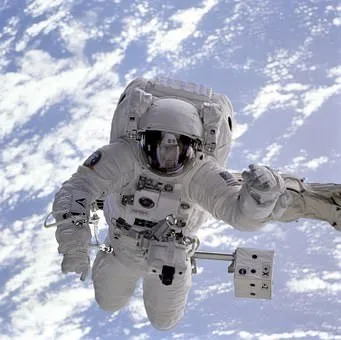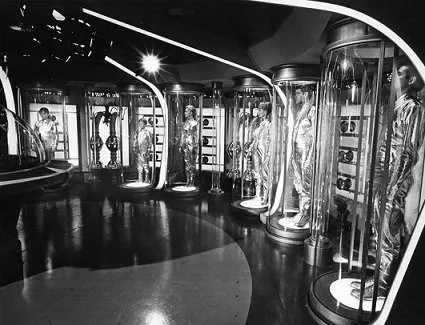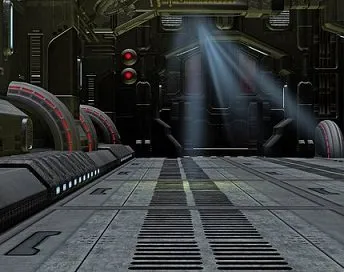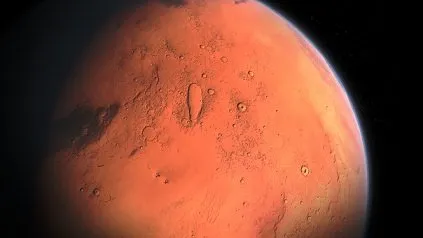Introduction
After man's amazing feat in space travel which was indicated by the moon-landing of July 20th 1969 by the Apollo II crew (Neil Armstrong, Michael Collins, and Buzz Aldrin), there have been considerable plans over the years to surpass this feat. And in the bid to do this, propositions have been made for another manned stellar travel, and this time, it has been termed "Mission-To-Mars". In this survey, we will be looking at a specific technology that would be a boost for astronauts to survive such a long distant and brutal journey; and this is the Suspended Animation (Cryo-Hibernation).

[Image Source: Pixabay. CC0 Licensed]
Before discussing in details the concept of suspended animation in space travel, we will briefly look at the proposed NASA's Mission-To-Mars to understand the need for this kind of technology for the astronauts.
Mission-To-Mars
There have been some plans to put humans on the red planet. Before now, it was considered a progression in futility, but like you may know, this is no longer a question of "if it is possible", but "how will it be done".
In furtherance of this proposition, a contender for this space mission has arisen; the young teenager Alyssa Carson (Yes! She has indicated interest for the journey). And no doubt, this journey comes with risks, just like you'll see shortly. But according to Alyssa:
If the option was to go to Mars and die, I would still be part of the mission. - Alyssa Carson [culled from the video source]
Hey!! You ain't gonna die, kid. Just hang on; technology has got your back
Some may ask, when is the proposed date for the Martian trip? According to NASA, this has been pegged around 2033 for some obvious reasons; among others; is the fact that, in that year, the distance between Earth and Mars will be closer than it has ever been in the last 2millennia.
But even at this, taking this journey is not like any other journey here on Earth. Now, how long; on average; can this journey last? Actually, this is where the major challenge lies. An exposition made by Mars One has indicated that this journey can take an average of 6-8months (assuming that the journey is undergone in one of the fastest spacecraft ever; which is the NASA's Juno; having a top speed of 165,000mph).
Okay! Truth be told; how can humans endure such journey? Well, a technology has emerged to give a boost to this. Now we will be looking at the concept of Suspended Animation (Cryo-Hibernation) as it relates to space trips.
Concept of Suspended Animation
Have you ever observed the "lungfish" and their ability to pass through the unfavorable condition in a rather sleep-like state (even outside water) for months? Okay, what if humans can be made to also pass through harsh conditions in an inactive state? That is the idea behind suspended animation.

[Image Source: Wikimedia Commons. Public Domain Licensed]
Suspended Animation is a process in which a living creature (humans; in this contest) are put in a virtually inactive state for a period of time without degradation or mutilation of the person's body. This is just like sleeping through time; but in a rather different manner. There are ways to achieve suspended animation, but we will be focusing on the Cryo-Hibernation (I.e, the temperature-induced hibernation). I know someone could ask: "How would it be possible to cryogenically hibernate humans and revive them successfully?". Okay, let me use this real life case as reported by bbc.co.uk to buttress the possibility before I continue.
In the year 2016, a particular man; Mitsutaka Uchikoshi; who was on a mountain-climbing expedition in the cold mountains of Japan, fell off and went missing. He was later discovered after about 24days frozen. But amazingly enough, he didn't die, but was cocooned in ice, in a kind of suspended animation. His internal organs were momentarily suspended too, which left him in a condition described as "apparent death". When he was found, he was resuscitated and he has been leading a fairly normal life.
Though it has not been proven scientifically how he was able to survive this for these number of day, but it is worthy to note that; if someone can achieve this without any technological help; I believe with the help of emerging technology, we can replicate this; even better.
But in the case of the proposed Martian trip, you can't just put astronauts inside a freezer and send them to Mars. So how does this hope to be achieved?

[Image Source: Pixabay. CC0 Licensed]
A research was heralded by a team of researchers from the SpaceWorks Inc, led by Dr John Bradford as seen in their publication. This research proposes the use of "Therapeutic Hypotemia" as a means to achieving this suspended animation.
This is a kind of procedure that has been employed in some surgical interventions like heart and brain surgery, in which the person's temperature is reduced so as to slow down metabolism, decrease the heart rate, and consequently slowing down the blood pressure. Medically, people have been seen to be put in this state for days and were able to survive. But with cutting-edge technology, propositions have been made to further extend this.
How will this work? Dr John Bradford has proposed a Spaceworks Statis Chamber, which he hopes to use in achieving "Deep Space Sleep". But unlike what we may have been made to believe from our sci-fi, this chamber will only work intermittently like a kind of shift. In which the astronauts would be hibernated and resuscitated intermittently (maybe in weeks) and repeating the same process, instead of a straight hibernation. This process would be automated with a passage of a robotic transnasal tubes into the person's body. The function of these tubes would be to provide warming mechanisms to resuscitate the astronauts from the stasis and also to provide a cooling mechanism for the hibernation process.
This is an emerging technology, and hence, there are many challenges that need to be circumvented. For example; after resuscitating someone from cryostasis, he/she could temporarily be paralysed. I mean, staying in one place for weeks would do the same to you. But hey!! Solution has been found for this, and that is using a "Neuromuscular Electrical Stimulator" to artificially induce the contraction of the muscles. Boom!! That would take care of the temporal paralysis.
With advances in this and other emerging technologies, the Mission-To-Mars would not be an impossibility after all. History is about to be made yet again.

[Image Source: Pixabay. CC0 Licensed]
Conclusion
As plans are underway to send humans to Mars, some possible options to sustain the astronauts in the course of the journey have been raised, and one of them is to employ the technology of suspended animation. No doubt, with the advances in this; in the not-so-distant future; Martian trips would be comparable to any other journey on Earth. Maybe this could, one day, lead to the establishment of an extraterrestrial colony (Martian Colony). But until then, let's keep an open mind as we watch what the future holds.
Thanks for reading
References for further reading:
- Nasa.gov/Mission-to-mars
- Spaceworks-aero/human-stasis
- Mar-One/Mars Trip
- Futurism/Misson-to-mars
- DigitalTrend/Human-stasis
- Futurism/Hibernation-Chamber
- SpaceWork-Statsis.pdf
All images are CC0/Public Domain Licensed and are linked to their sources


gif by @foundation